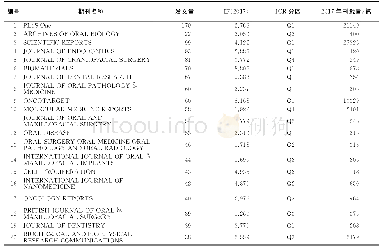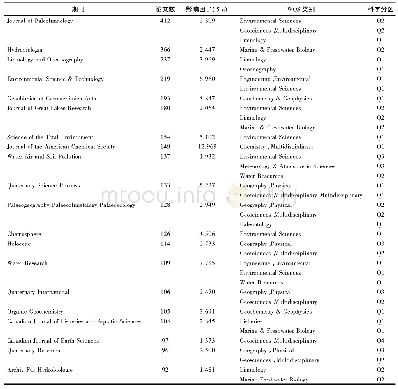《Table 2 The top 20 most productive journals on dam removal research from 1953 to 2016》
 提示:宽带有限、当前游客访问压缩模式
提示:宽带有限、当前游客访问压缩模式
本系列图表出处文件名:随高清版一同展现
《Global Trends in Dam Removal and Related Research: A Systematic Review Based on Associated Datasets and Bibliometric Analysis》
Notes:JCR,Journal Citation Report;R,journal rank in category;T,total journals in category;Q,quality in category;TP,total publications;percentage(%),per-centage of publications for a certain journal;TC,total citation counts;CPP,citation per public
In this study,nine datasets on dam removal were collected(Table 1):the United States Geological Survey(USGS)Dam Removal Science Database(2015);American Rivers Dam Removal Database(2016);European Rivers Dam Removal Database(2016);The United Kingdom River Restoration Project Database;Low-Head Dam Removal Project Database;France,Spain and United States Dam Decommissioning Database;and other dam removal project databases.Due to the multiple sources of data and various geographic coordinate systems used(e.g.,WGS1972,WGS1984 and NAD1983),the spatial location of each removed dam was corrected by consistently using the Robinson(world)Coordinate System.When location information was missing,we searched Google EarthTM,the Global Reservoir and Dam(GRanD)database and the literature to identify the location of the dam.Additionally,other supplemental information was used to supply missing attributes.Still,some of the basic information(i.e.,the date of the dam removal)could not be determined.Attributes included the name of the dam(alternative name),name of the impounded river,name of the main basin,name of the nearest city,height of the dam in metres,age of the dam in years,latitude/longitude,and year(not further specified:year of construction;year of completion;year of decommissioning).Moreover,a global polygon layer,basic metadata information and projection information were provided in ESRI shapefile format with accompanying XML(.shp.xml)and ASCII(.prj)files.Each shapefile consists of five core files(.dbf,.sbn,.sbx,.shp,and.shx files).The above information was integrated to map the distribution of dam removal using ArcGIS 10.4.1.
| 图表编号 | XD0046955200 严禁用于非法目的 |
|---|---|
| 绘制时间 | 2019.02.01 |
| 作者 | DING Liuyong、CHEN Liqiang、DING Chengzhi、TAO Juan |
| 绘制单位 | Yunnan Key Laboratory of International Rivers and Transboundary Eco-security, Yunnan University、Institute of International Rivers and Eco-security, Yunnan University、Yunnan Key Laboratory of International Rivers and Transboundary Eco-security, Yunnan Univ |
| 更多格式 | 高清、无水印(增值服务) |
查看“Table 2 The top 20 most productive journals on dam removal research from 1953 to 2016”的人还看了
-

- 表4 Top20的期刊及其2017年的影响因子及分区Tab.4 Top 20journals published output SCI papers funded by stomatological NSFC and their IF an
-

- Table 1.The Most Stable Adsorption Energy, Bader Charge, and the Bond Length of C–Os on the CaO (001) Surface at Differe
-

- Table 1 List of ten journals that published the most diabetes papers from China between 1995 and 2015





